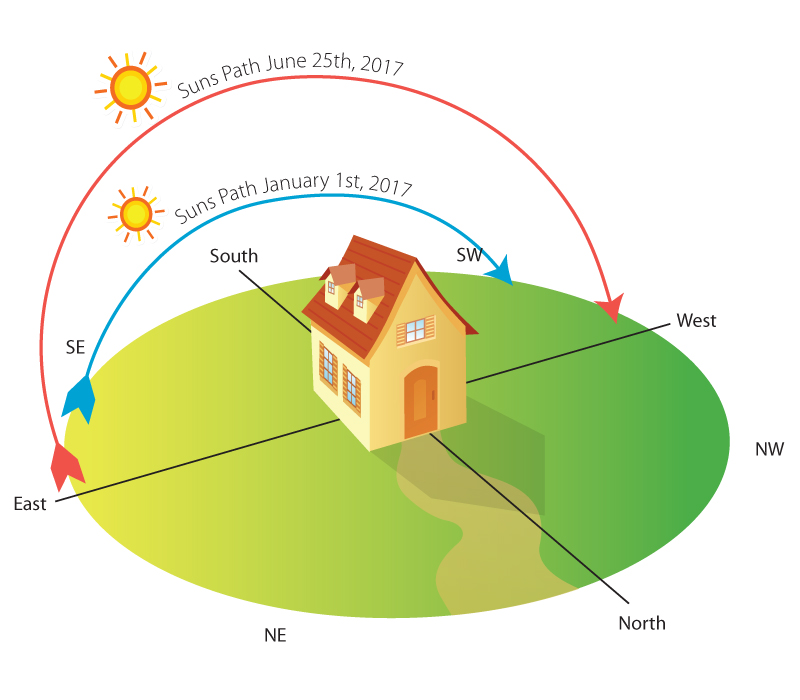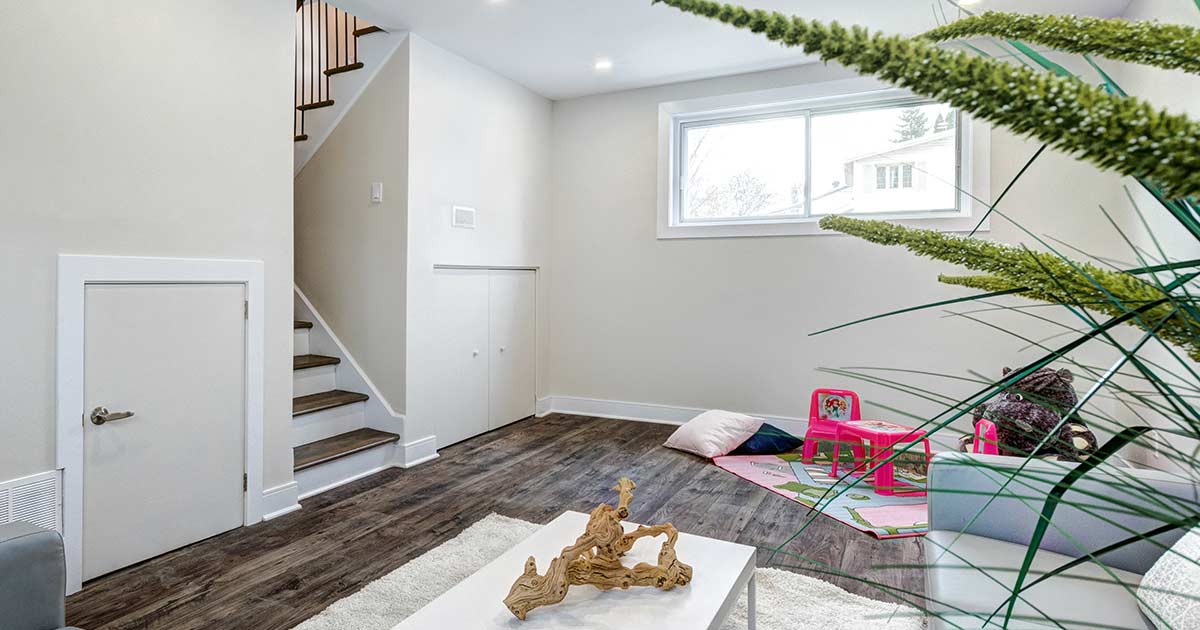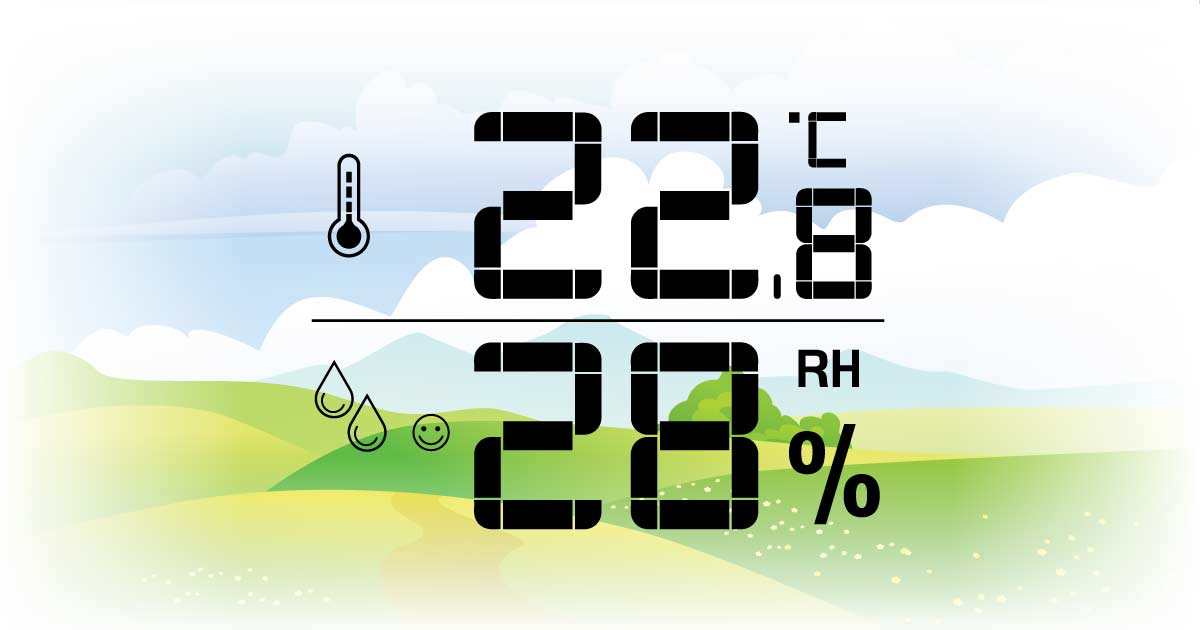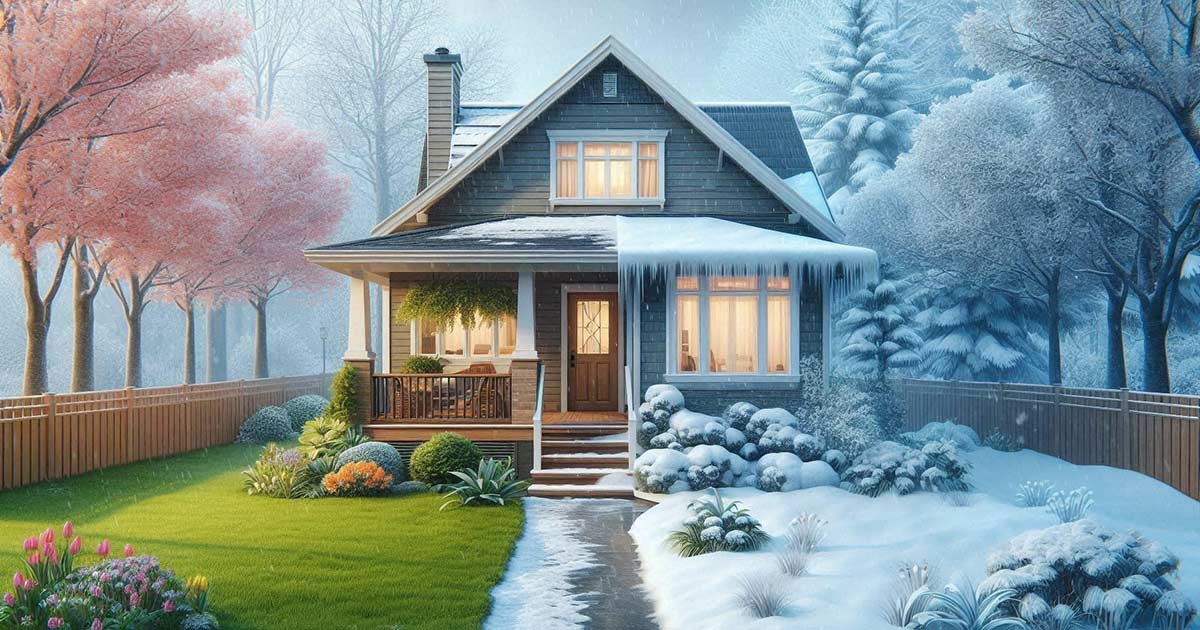Insights > Category > Posted: 2025-Mar-21, Updated: 2025-Mar-31
Keep Energy Costs Down and Comfort Up with Energy-Efficient Windows
Maximizing window energy efficiency: What you need to know
No matter the season, energy-efficient windows can significantly improve your home’s comfort and reduce energy costs. However, to get the most out of your windows, it's essential to consider several key factors:
- The orientation of your home in relation to the sun
- Seasonal shading elements, such as trees or nearby buildings
- Interior window treatments
- Permanent awnings or shutters
Where’s the sun?
We all know the sun rises in the east and sets in the west, but its path changes throughout the year. For example, in Ottawa, the sun rises closer to the northeast in summer and southeast in winter, setting southwest in both seasons. Understanding the sun's movement helps you plan window installations and select glass options that enhance your home’s energy efficiency.

Taming the power of the sun
In Ottawa, the sun is never directly overhead, no matter the month or time of day. Depending on your window’s orientation, you can take advantage of different glass coatings and tints to optimize comfort. Here’s a general guide:
- East-facing windows get morning sun exposure.
- South-facing windows receive sunlight for most of the day.
- West-facing windows are exposed to afternoon and early evening sun.
- North-facing windows receive very little direct sunlight.
Scenario 1: Warm your home
Situation:
Your living room features a large south-facing picture window. Large trees provide shade in the summer, but the room is fully exposed to the sun in the winter. You want to take advantage of solar heat gain in winter while minimizing brightness and preventing UV damage to your furniture.
Solution:
Select Low-E 180 glass.
- Reduces energy costs in the winter
- Provides the highest Energy Star rating
- U-factor of 0.31
- Solar Heat Gain Coefficient (SHGC) of 0.68, maximizing winter heat gain
- Allows 79% light transmission
- Blocks 70% of damaging UV rays
Scenario 2: Control the brightness
Situation:
Your large family room faces southwest, with several casement and picture windows, plus a sliding patio door leading to the deck. The room gets too bright and hot in the summer, while it feels cold and overly bright in the winter. You also want to protect your leather furniture from UV rays.
Solution:
Choose Low-E 366 glass for all windows and the patio door.
- Provides superior insulation, reducing heat in the summer and keeping warmth inside in the winter
- U-factor of 0.29
- SHGC of 0.27, controlling solar gain to prevent overheating
- Allows 65% light transmission
- Blocks 95% of damaging UV rays
Scenario 3: Keep the cold out
Situation:
Your north-facing bedroom has a large modular picture window with two casement side windows. The room always feels cold in the winter, and you notice more condensation on these windows compared to others facing different directions.
Solution:
Upgrade to triple-glazed, argon-filled windows.
- Best insulation option for cold conditions, with U-factor as low as 0.16
- Keeps heat and air conditioning inside, reducing energy costs
- No solar gain as the window faces north
- No UV exposure due to lack of direct sunlight
- Allows 98% light transmission
Scenario 4: Improve comfort and reduce condensation in a sunroom
Situation:
You have a sunroom with large windows that face southeast. The sunroom is used throughout the day and is subject to a lot of sunlight, particularly in the morning and early afternoon. In the winter, you find the room to be too cold and experience a lot of condensation on the windows, which leads to issues with mould and mildew. In the summer, the room can become uncomfortably warm and bright.
Solution:
Upgrade to Low-E 272 glass with argon gas fill for all the windows in the sunroom.
- Enhanced insulation, reducing heat loss in winter and keeping the room cooler in summer
- U-factor of 0.27, providing excellent thermal insulation
- SHGC of 0.32, allowing moderate solar heat gain and blocking excessive summer heat
- Reduces condensation by providing better thermal insulation
- Blocks 84% of UV rays, protecting furniture and flooring
Definition of terms
- Low Emissive (Low-E) Glass: Low-E glass has a microscopically thin layer of silver that reduces heat flow through the glass. It reflects heat both ways, keeping it out in summer and inside in winter.
- Tinted Glass: Tinted glass absorbs and re-radiates light, reducing heat, brightness, and glare in summer. However, it loses heat in the winter at the same rate as non-tinted glass.
- Window Glazing: Glazing refers to the glass panels framed within a window. Triple-glazed windows offer higher insulation (R-value), which helps reduce energy costs.
Disclaimer
The information provided in this article is intended for general informational purposes only and is based on typical scenarios in Ottawa's climate. While we strive to ensure the accuracy of the information, individual circumstances may vary. For personalized advice and recommendations tailored to your specific needs and home conditions, please consult with a professional window replacement specialist. The effectiveness of window solutions can depend on various factors including installation quality, existing home conditions, and specific product features.
Bayview Windows does not guarantee the results of any recommendations or solutions provided in this article. All product specifications, energy ratings, and performance metrics are subject to change by manufacturers. Always verify details with a qualified professional before making purchasing decisions.
Related stories
Find the perfect balance: Expert help for optimal home comfort and efficiency
Struggling to balance home comfort and window efficiency? Skip the guesswork and consult your local window specialist. They’ll help you choose the perfect windows to maximize comfort and minimize energy costs.
To learn more about our window and door products and their energy efficiency benefits, feel free to reach out. Better yet, schedule an appointment to visit us and experience our products firsthand!
Efficient - INFOGRAPHIC
INFOGRAPHIC
Understanding Ratings
CDN Climate Zone
Comparing Products
Visual Transmittance (VT)
Solar Heat Gain (SHGC)
Energy Star (ER)
Air Leakage (AL)
R-value of Insulation
U-factor (U-Value)
Spectrally Selective Coatings
Low-E Coatings
Gas Between the Panes



